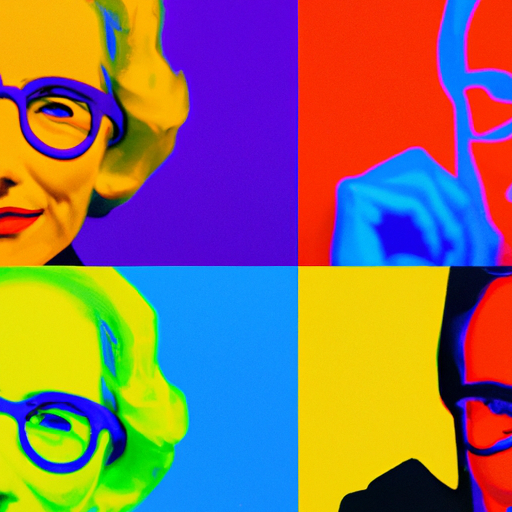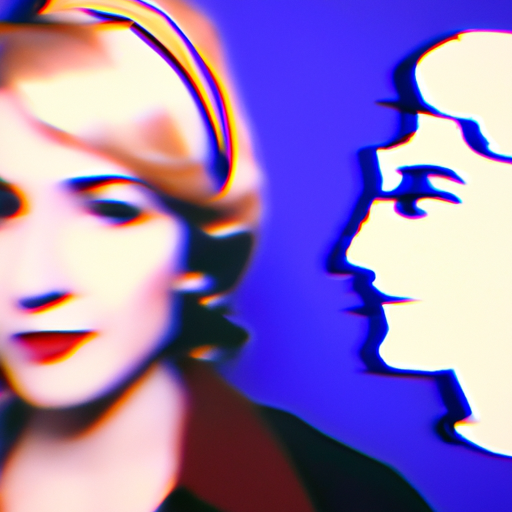
-
Table of Contents
- The Fusion of Fine Art and Graphic Design
- The Relationship Between Fine Art and Graphic Design
- The Benefits of the Fusion
- 1. Enhanced Visual Appeal
- 2. Emotional Connection
- 3. Increased Creativity
- 4. Storytelling
- The Fusion in Various Industries
- 1. Advertising and Marketing
- 2. Fashion and Apparel
- 3. Web and User Interface Design
- Summary
The Fusion of Fine Art and Graphic Design

Art and design have long been intertwined, with each influencing and inspiring the other. The fusion of fine art and graphic design is a powerful combination that has the potential to create visually stunning and thought-provoking works. In this article, we will explore the relationship between fine art and graphic design, the benefits of their fusion, and how this fusion is being utilized in various industries.
The Relationship Between Fine Art and Graphic Design
Fine art and graphic design share a common foundation in visual communication. Both disciplines aim to convey a message or evoke an emotion through visual elements. However, they differ in their approach and purpose.
Fine art is often seen as a form of self-expression, where artists use various mediums to explore their creativity and convey their personal vision. It is subjective and open to interpretation, allowing viewers to engage with the artwork on a deeper level.
On the other hand, graphic design is more focused on communication and problem-solving. It involves the use of typography, imagery, and layout to convey a specific message or promote a product or service. Graphic designers work within certain constraints and guidelines to create visually appealing and effective designs.
Despite these differences, fine art and graphic design have a symbiotic relationship. Fine art can inspire graphic designers to think outside the box and explore new creative possibilities. Graphic design, on the other hand, can provide a practical framework for fine artists to communicate their ideas to a wider audience.
The Benefits of the Fusion
The fusion of fine art and graphic design offers several benefits that can enhance the creative process and the final outcome. Let’s explore some of these benefits:
1. Enhanced Visual Appeal
By incorporating elements of fine art into graphic design, designers can create visually stunning and unique designs. Fine art techniques such as brush strokes, textures, and color blending can add depth and richness to graphic designs, making them more visually appealing.
For example, the use of watercolor textures in a website design can create a soft and organic feel, while the incorporation of abstract paintings in a poster design can make it stand out and grab attention.
2. Emotional Connection
Fine art has the power to evoke emotions and create a strong connection with the viewer. By infusing graphic design with elements of fine art, designers can tap into this emotional aspect and create designs that resonate with the audience on a deeper level.
For instance, a graphic designer working on a social awareness campaign can use fine art techniques to convey the seriousness and urgency of the issue, eliciting a strong emotional response from the viewers.
3. Increased Creativity
The fusion of fine art and graphic design encourages designers to think outside the box and explore new creative possibilities. By breaking away from traditional design conventions, designers can push the boundaries of their creativity and come up with innovative and unique solutions.
For example, a graphic designer inspired by the abstract expressionist movement can experiment with unconventional layouts and compositions, creating designs that are visually striking and memorable.
4. Storytelling
Both fine art and graphic design have the power to tell stories. By combining the two, designers can create designs that not only communicate a message but also engage the audience in a narrative.
For instance, a graphic designer working on a book cover can incorporate elements of fine art to visually represent the story and capture the essence of the narrative, enticing readers to pick up the book.
The Fusion in Various Industries
The fusion of fine art and graphic design is being utilized in various industries to create impactful and memorable designs. Let’s take a look at some examples:
1. Advertising and Marketing
In the advertising and marketing industry, the fusion of fine art and graphic design can help brands stand out and create a lasting impression on their target audience. By incorporating fine art techniques and aesthetics into their campaigns, brands can create visually stunning and emotionally engaging advertisements.
For example, the famous “Got Milk?” campaign by the California Milk Processor Board featured portraits of celebrities with milk mustaches, created using fine art techniques. These ads not only caught the attention of viewers but also conveyed the message of the campaign effectively.
2. Fashion and Apparel
Fashion and apparel brands often collaborate with artists to create unique and limited-edition collections. By fusing fine art with graphic design, these brands can create wearable art that blurs the line between fashion and art.
For instance, fashion designer Alexander McQueen collaborated with artist Damien Hirst to create a collection featuring Hirst’s iconic butterfly and skull motifs. The fusion of Hirst’s fine art with McQueen’s fashion design resulted in visually stunning and highly sought-after pieces.
3. Web and User Interface Design
The fusion of fine art and graphic design is also prevalent in web and user interface design. Designers are incorporating fine art techniques and aesthetics to create visually appealing and immersive online experiences.
For example, the website of the Museum of Modern Art (MoMA) features a design that incorporates elements of fine art, such as brush strokes and textures, to create a visually engaging and artistic browsing experience.
Summary
The fusion of fine art and graphic design offers a powerful combination that can enhance the creative process and create visually stunning and thought-provoking designs. By incorporating elements of fine art into graphic design, designers can enhance visual appeal, create emotional connections, increase creativity, and tell compelling stories. This fusion is being utilized in various industries, including advertising and marketing, fashion and apparel, and web and user interface design. The possibilities are endless when fine art and graphic design come together, opening up new avenues for creativity and expression.
